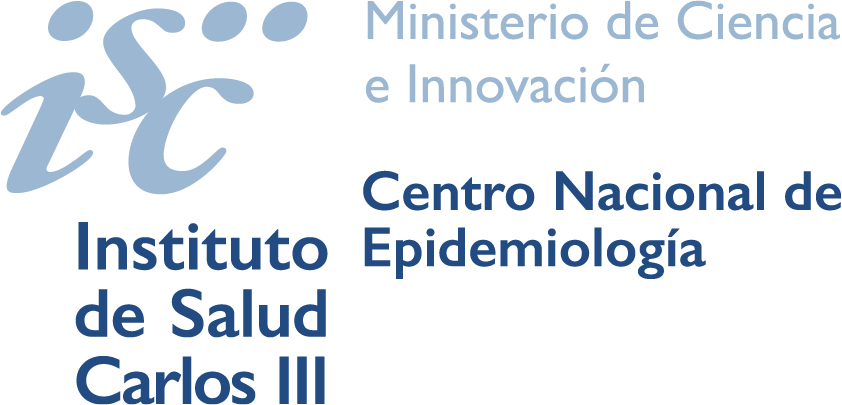Epidemiological Analysis of Human Q fever in Spain (2020-2024)
DOI:
https://doi.org/10.4321/s2173-92772025000300005Keywords:
Q fever, Coxiella burnetii, zoonoses, epidemiological surveillance, SpainAbstract
Introduction: Q fever is caused by Coxiella burnetii, a highly infectious and resistant bacterium. Spain notifies the highest number of cases in Europe.
Method: A descriptive analysis of autochthonous cases notified to RENAVE in the 2020-2024 period. Variables of person, place and time were analysed by calculating frequencies, percentages and notification rates (NR). Disease maps were generated.
Results: In 2024, 544 cases were notified (NR= 1.12), both maximum values for the period 2020-2024. Seasonality shifted, with increased cases in January and February. Andalusia notified the highest number of cases and Navarre the highest NR.
Discussion: The increase of cases is likely related to improved disease notification. Men over 45 years old are occupationally at-risk. A One Health approach is recommended.
Downloads
References
Marrie TJ, Raoult D. 190 - Coxiella burnetii (Q Fever). In: Bennett JE, Dolin R, Blaser MJ, editors. Mandell, Douglas, and Bennett’s Principles and Practice of Infectious Diseases (Eighth Edition) [Internet]. Philadelphia: W.B. Saunders; 2015 [cited 2022 May 27]. p. 2208-2216.e2. Available from: https://www.sciencedirect.com/science/article/pii/B9781455748013001909
Clark NJ, Magalhaes RJS. Airborne geographical dispersal of Q fever from livestock holdings to human communities: a systematic review and critical appraisal of evidence. Bmc Infect Dis. 2018 May 15;18:218.
Eldin C, Mélenotte C, Mediannikov O, Ghigo E, Million M, Edouard S, et al. From Q Fever to Coxiella burnetii Infection: a Paradigm Change. Clin Microbiol Rev. 2017 Jan;30(1):115–90.
European Food Safety Authority (EFSA), European Centre for Disease Prevention and Control (ECDC). The European Union One Health 2023 Zoonoses report. EFSA J Eur Food Saf Auth. 2024 Dec;22(12):e9106.
Protocolo de vigilancia de Fiebre Q [Internet]. Madrid, España: Centro Nacional de Epidemiología. Instituto de Salud Carlos III; 2016 Sep. (Protocolos de la Red Nacional de Vigilancia Epidemiológica). Available from: https://cne.isciii.es/documents/d/cne/protocolo-20de-20vigilancia-20de-20fiebre-20q-pdf
Jefatura del Estado. Ley Orgánica 3/2018, de 5 de diciembre, de Protección de Datos Personales y garantía de los derechos digitales [Internet]. Sect. 1, Ley Orgánica 3/2018 Dec 6, 2018 p. 119788–857. Available from: https://www.boe.es/eli/es/lo/2018/12/05/3
Espi A, del Cerro A, Oleaga A, Rodriguez-Perez M, Lopez CM, Hurtado A, et al. One Health Approach: An Overview of Q Fever in Livestock, Wildlife and Humans in Asturias (Northwestern Spain). Animals. 2021 May;11(5):1395.
Cifo D, Estévez-Reboredo RM, Gomez-Barroso D. Fiebre Q humana en España (2016-2020). Bol Epidemiológico Sem. 2023 Mar 31;31(1):56–64.
Miyar I, Guerras JM, Estévez-Reboredo RM, Gómez-Barroso D, González-Barrio D, Jado I, et al. Fiebre Q en España: Comparativa entre notificación epidemiológica y altas hospitalarias (2016-2022). Bol Epidemiológico Sem. 2025 Mar 31;33(1):58–70.
Groten T, Kuenzer K, Moog U, Hermann B, Maier K, Boden K. Who is at risk of occupational Q fever: new insights from a multi-profession cross-sectional study. BMJ OPEN. 2020 Feb;10(2):e030088.
Van Leuken JPG, Swart AN, Brandsma J, Terink W, Van de Kassteele J, Droogers P, et al. Human Q fever incidence is associated to spatiotemporal environmental conditions. One Health. 2016 Dec 1;2:77–87.
Downloads
Published
How to Cite
Issue
Section
License
Copyright (c) 2025 Daniel Cifo, Diana Gómez-Barroso, David González-Barrio, Esteban Aznar-Cano, Laura Santos-Larrégola, Rosa M. Estévez-Reboredo

This work is licensed under a Creative Commons Attribution-NonCommercial-ShareAlike 4.0 International License.
El material creado por un autor puede ser distribuido, copiado y exhibido por terceros si se hace referencia a la autoría. No se puede obtener ningún beneficio comercial y las obras derivadas tienen que estar bajo los mismos términos de licencia que el trabajo original


